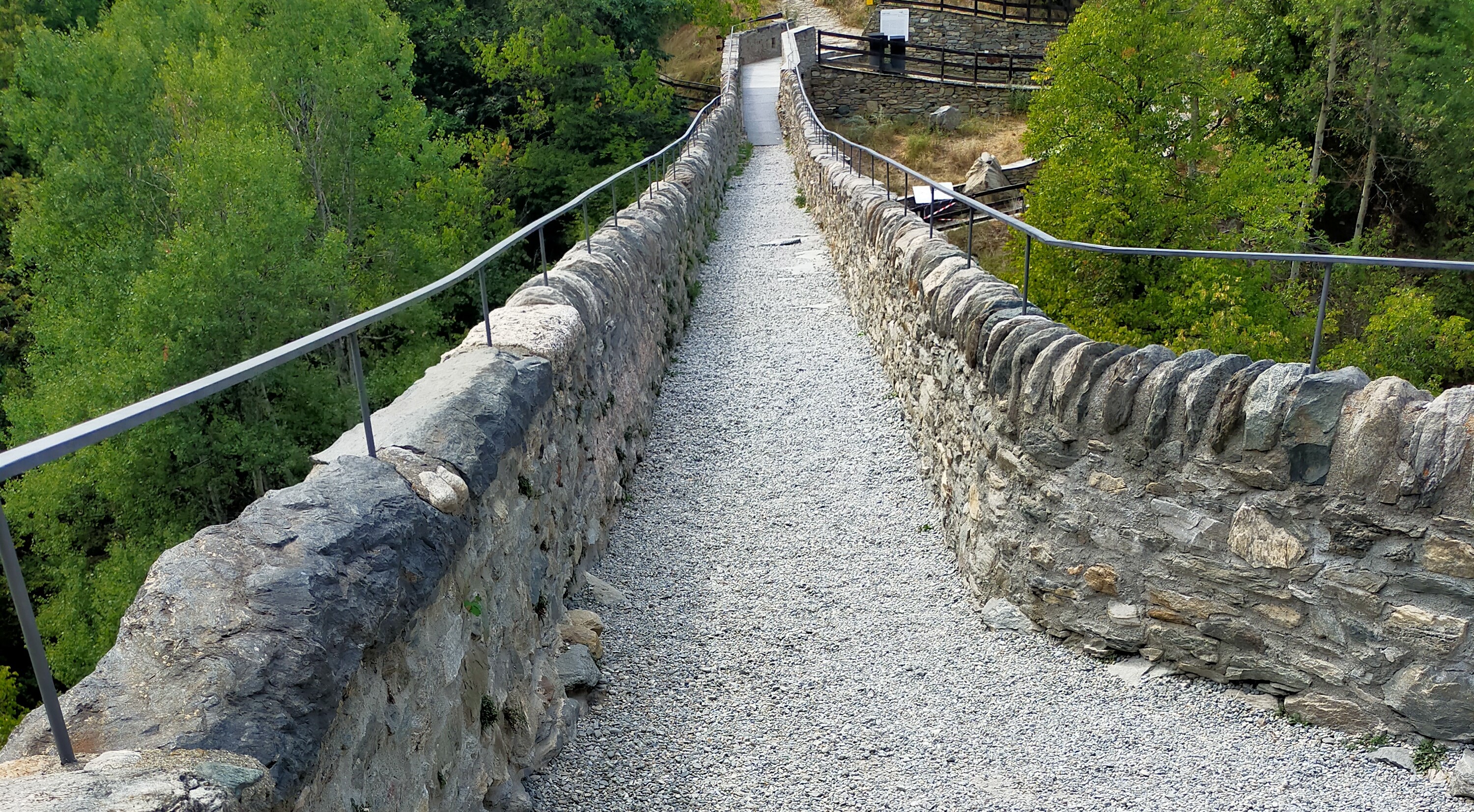07/07/2023 | Partner: Regione Valle d'Aosta
The aqueduct bridge of Le Pont-d'Ael
An imposing structure that defies time and height, still arousing emotion and awe today.
From 3 B.C. water and men, above and inside the bridge, cross the narrow gorge at the behest of Caius Avillius Caimus, a Roman-Paduan entrepreneur active in the exploitation of local resources for construction.

Context
Crossing the village of the same name, the bridge of Le Pont-d’Ael appears in all its grandeur. Surrounded by the steep slopes of the narrow gorge, at the entrance of the Valley of Cogne, this bridge silently witnessed the transformation of the surrounding territory by heroic farmers who have made steep terraces on both sides of the stream over the centuries.
Nature varies from one shore to the other and today, the one that extends on the west side, welcomes a Natural Reserve characterized by arid climate and species of unique and rare fauna and flora.
History
“Under Emperor Caesar Augustus, appointed to his 13th Consulate.
Caius Avillius Caimus, son of Caius, Paduan. Private work”
Thus states the Latin inscription placed above the large arch, telling us that in 3 B.C. an exponent of the wealthy Paduan family of the Avilli, linked to the construction industry and the treatment of raw materials, began the construction of this imposing structure. His purpose was to channel the water of the Grand-Eyvia stream to use it in the marble quarrying activity, namely the local bardiglio used in the cladding of public buildings in the Roman town of Augusta Praetoria.
This work, which as the inscription recalls was “private”, provided a superior channel, the specus, for the flow of water and an internal walkway for maintenance.
From the 3rd century onwards, the water from the aqueduct bridge was used for the needs of the village and only later the specus was drained and turned into a walkway.
Despite its 2,000-year history and its numerous restorations, consolidations and modifications to suit all needs, it comes to us almost original and full of great charm.
Architecture
Movement, elasticity and lightness are the characteristics that distinguish the bridge of Le Pont-d’Ael.
A balancing act created thanks to the engineering skills of the Romans, which allow the bridge to adapt to the movements of the left side.
From the intake structure to the bardiglio quarries, the water path developed from one side to the other with a long channel that allowed it to proceed at an adequate and constant speed. On the hydraulic mortar that covered the specus, archaeologists have found traces of the work tools and the imprint of a nailed shoe of a Roman worker, unaware perhaps of the amazement that his indelible footprint imprinted on this great work in the centuries to come.


